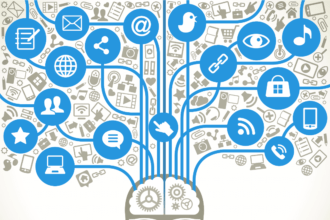 With the rise of big data, many industries have seen just how beneficial using large amounts of information can be in improving their businesses.
With the rise of big data, many industries have seen just how beneficial using large amounts of information can be in improving their businesses.
 With the rise of big data, many industries have seen just how beneficial using large amounts of information can be in improving their businesses. From retail to healthcare to sports to financial, each industry has found something valuable about big data in enhancing both the big picture and the smaller details. So it should probably come as little surprise that the food industry has made significant progress in using big data as well. Perhaps big data doesn’t exactly sound like the right fit for restaurants, but in practice, that hasn’t been the case. Big data provides a wealth of information that, when interpreted correctly, can truly transform any company, fueling growth and encouraging innovation. As can be seen for many restaurants hopping on the big data bandwagon, improvements have been clear and unmistakable while plenty of potential still remains.
With the rise of big data, many industries have seen just how beneficial using large amounts of information can be in improving their businesses. From retail to healthcare to sports to financial, each industry has found something valuable about big data in enhancing both the big picture and the smaller details. So it should probably come as little surprise that the food industry has made significant progress in using big data as well. Perhaps big data doesn’t exactly sound like the right fit for restaurants, but in practice, that hasn’t been the case. Big data provides a wealth of information that, when interpreted correctly, can truly transform any company, fueling growth and encouraging innovation. As can be seen for many restaurants hopping on the big data bandwagon, improvements have been clear and unmistakable while plenty of potential still remains.
Big data essentially allows restaurants to analyze in minute detail every action they take. Those actions can be small, such as a single customer interaction, or they can be expansive, like adopting a completely new business model. When it comes to the food industry, there are three major areas that have seen some of the largest impacts when big data is put to use. The first is an area that big data has positively affected in other industries: marketing. Reaching and attracting new customers is always a challenge for restaurants, whether they’re a new small town diner or a nationwide fast food chain. To truly bring new customers into the fold, restaurants need to get a better understanding of what motivates each individual customer, and few things aid in this pursuit better than big data. For example, big data can be used to gauge social media sentiments on a restaurant, helping that restaurant figure out where best to improve and how to attract the customer that made the comments. Some restaurants go even further, using digital survey tools while customers are at the establishment to gain real-time analysis of the overall customer experience. Use of big data to figure out what makes customers tick leads to more effective marketing campaigns, and it’s a much better method compared to focus groups or comment cards.
A second area where big data can help a restaurant excel is in the creation of new menu items. With big data, restaurants can test out new meals before they make it to diners’ plates. Some computer programs have even been created to take big data and create new ideas according to a set of established parameters. Big data may also be used to identify more popular tastes that may be flying under the radar. Ever wonder why bacon is getting added to everything these days? It goes beyond a simple social media craze. A data mining project conducted by the Food Network and Wired showed that many foods saw massive ratings improvements from food-lovers when bacon was added. Some restaurants may even choose to use outside software providers as a way to measure if a new menu item will succeed. The measurements include not just the type of food involved but its pricing and the marketing efforts behind it. Without big data, many restaurant owners would only be able to go on their gut instinct.
A third way big data can help restaurants is by making their stores more efficient. Take the case of the world famous McDonald’s restaurants. Using big data, the fast food chain was able to improve the efficiency of their drive-thru design ensuring each customer was served as quickly as possible. Big data helped McDonald’s anticipate times when demands would increase, optimizing the drive-thru experience. Beyond this, big data was also used to track in-store traffic and measure each customer interaction. Pizza Hut has gotten into big data as well during a major refurbishment. Using cloud computing software, the company was able to measure the impact of their changes on profits, while also enabling them to measure pricing and marketing effects more accurately.
These are only the first steps restaurants have taken into the vast field of big data. More improvements and innovations are likely to come as the food industry becomes more familiar with everything big data is capable of and what is cloud computing. As technologies advance, these capabilities will also become more available to smaller restaurants as well. As big data grows, customers will also likely see an improvement in their experiences when visiting restaurants. In short, big data provides a boost for both the restaurant and the diners.
Image Source: Flickr









